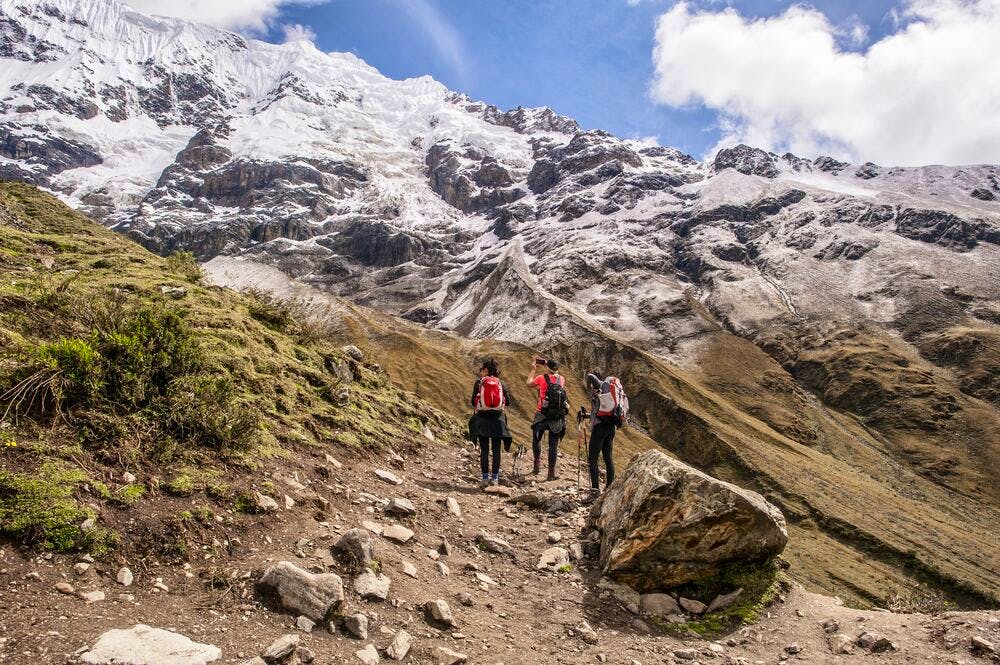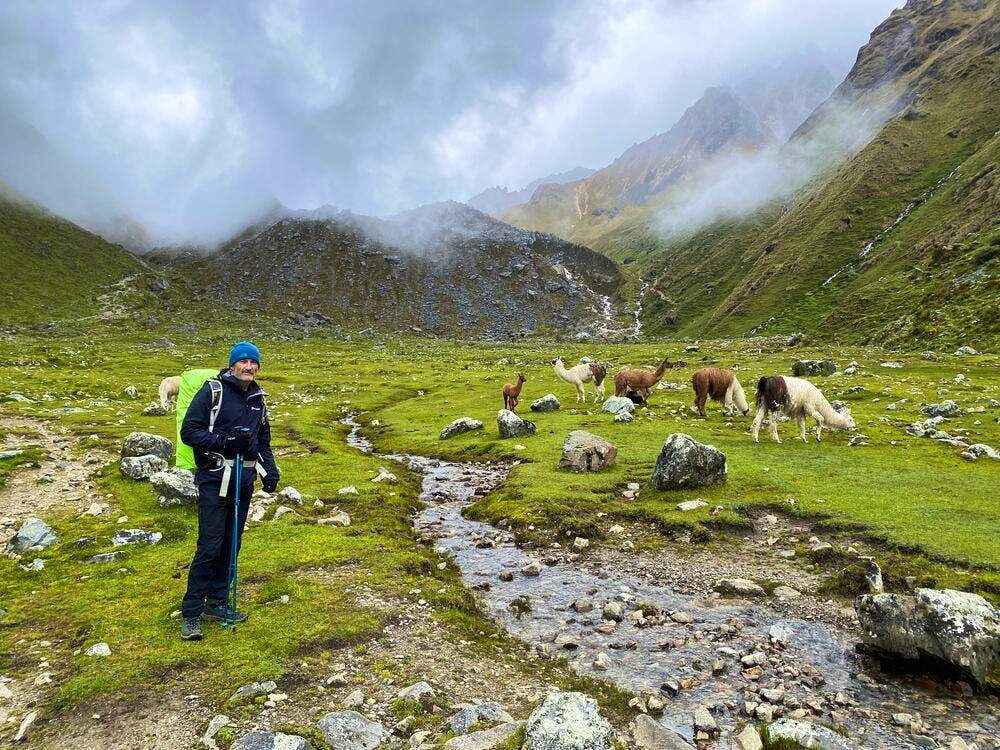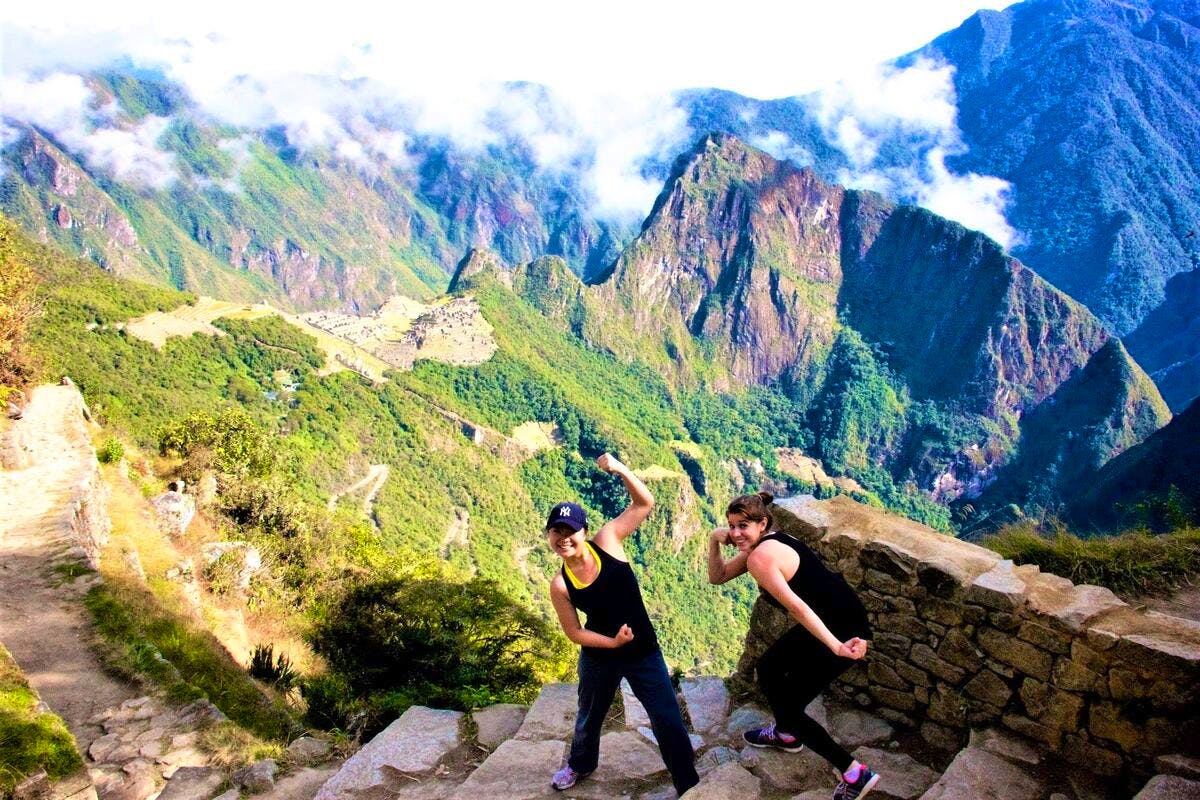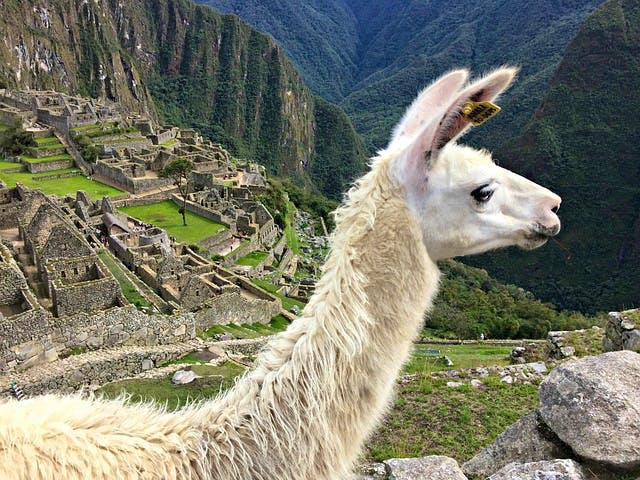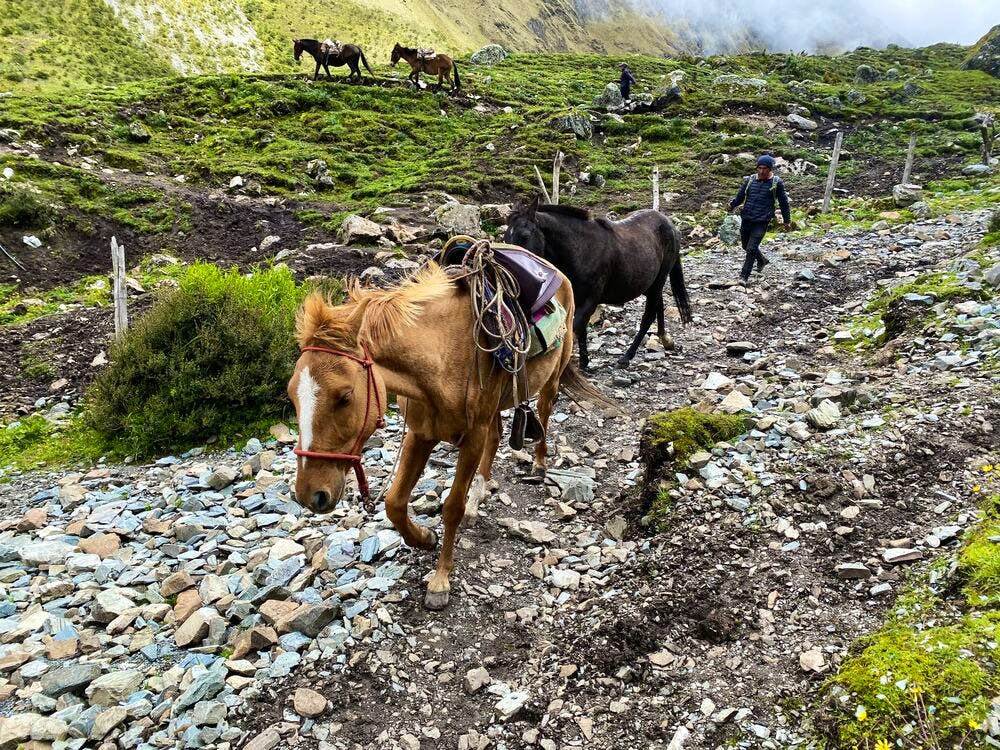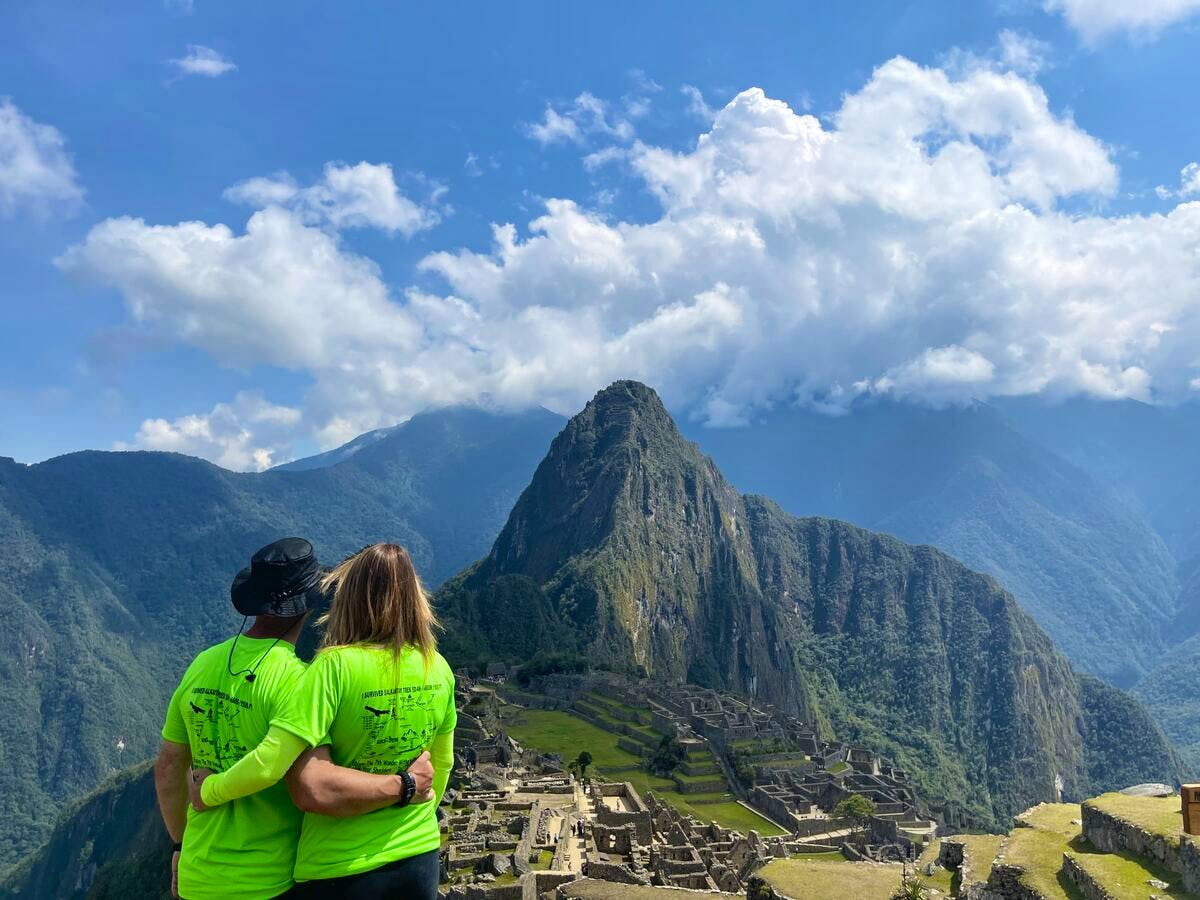Are you planning an exciting
Machu Picchu trek? Knowing the ins and outs of Machu Picchu weather is crucial for an unforgettable adventure.
Weather in Machu Picchu, Peru: The Four Seasons of Machu Picchu
Understanding the unique weather patterns of Machu Picchu can make or break your trip. Each season offers a different experience, from clear skies to dramatic downpours and will ultimately determine
how long to hike Machu Picchu.
Let’s delve into the four seasons so you can pick the perfect time for your adventure and add suitable clothing to your
Inca trail packing list.
Dry Season (May to October)
Temperatures range from a comfortable 50°F to 75°F or 10°C to 24°C, and humidity levels are relatively low. You’ll mainly experience clear skies, making it ideal for those picture-perfect shots and an epic daytime
hike to Machu Picchu.

Latest Deals
Discover trips on sale on Skyhook. Book once-in-a-lifetime adventures at discounted prices.
Visibility is at its peak during these months, offering unobstructed views of the ancient ruins and surrounding landscapes. Trekking conditions are excellent, with dry and firm trails.
However, it’s also the high tourist season, so expect larger crowds and potentially higher prices for accommodations and tours, particularly with
Machu Picchu train rides.
Given the favourable weather, light layers are your best friend. Pack breathable fabrics, a good pair of hiking boots, and don’t forget your sunblock and hat for protection against the strong Andean sun. A light jacket for the cooler evenings is also a good idea.
The dry season coincides with many traditional Andean festivals. If you time your visit right, you could experience authentic local culture, adding another layer of richness to your
Machu Picchu training plan and festival schedule.
Wet Season (November to April)
The wet season runs from November to April and brings a different kind of beauty. Temperatures are relatively consistent, ranging from 45°F to 70°F, about 7°C to 21°C.
However, expect frequent rain showers and higher humidity levels up to 80%.

Latest Deals
Discover trips on sale on Skyhook. Book once-in-a-lifetime adventures at discounted prices.
The rain transforms Machu Picchu into a lush, green wonderland, making trekking more challenging. Trails can be slippery, and visibility is often reduced due to mist and fog.
On the plus side, fewer tourists venture out during these months, offering a more secluded experience.
So, what to wear at Machu Picchu during this season? In our opinion, waterproofing everything is the mantra for the wet season.
Invest in a high-quality rain jacket and waterproof boots, and even consider rain covers for your backpack. Quick-dry clothing is also a good idea, as are moisture-wicking layers to keep you comfortable.
The wet season is the best time to see the orchids of Machu Picchu in full bloom. Over 400 different types of orchids adorn the site, making it a botanist’s dream.
Shoulder Seasons (April and November)
April and November are transitional months that blend dry and wet conditions. Temperatures hover around 50°F to 70°F (10°C to 21°C), making it reasonably comfortable. You’ll experience a mix of sunny days and occasional rain showers, so it’s a bit of a weather roulette.

Latest Deals
Discover trips on sale on Skyhook. Book once-in-a-lifetime adventures at discounted prices.
These months offer a balanced experience and less of a
Machu Picchu hike difficulty. You’ll find fewer crowds than in the high season but better trekking conditions than in the wet season. However, the unpredictable weather makes planning outdoor activities challenging.
Versatility is key when packing for the shoulder seasons. Think of layers that can be easily added or removed, and don’t skimp on sun and rain protection. A pair of versatile hiking boots that offer breathability and water resistance would be ideal.
The shoulder seasons are a great time to spot the Andean condor, one of the world’s largest flying birds. These majestic
Machu Picchu animals are often more visible with fewer crowds and milder weather.
Local Weather Wisdom: The Andean Way
In the Andean highlands, where Machu Picchu is located, locals have their own unique ways of predicting weather. For centuries, they’ve observed natural indicators to forecast conditions:
Animal Behavior: Locals often watch the movements and behaviours of birds and livestock like Machu Picchu llamas. For example, if birds are flying low, it’s usually a sign of impending rain.
Plant Life: Certain plants, like the “Puya raimondii,” also known as the Queen of the Andes, are believed to bloom more vividly before a heavy downpour.
Cloud Formations: The shape and movement of clouds are also observed. Cumulus clouds building up during the day often indicate afternoon showers.
Traditional Festivals: Some festivals, like the “Fiesta de San Juan,” are believed to bring good weather and are celebrated with rituals asking for protection and good fortune during travels.
These local traditions can enrich your travel experience and give you another lens through which to understand Machu Picchu weather.
While weather doesn’t directly cause altitude sickness, the symptoms can be exacerbated by extreme temperatures or rapid weather changes.
And while you're visiting this high-altitude city, we recommend spending some time in the iconic
Sacred Valley Cusco too.
Tips for Staying Healthy and Safe in All Kinds of Machu Picchu Weather
Hydration: Regardless of the season, staying hydrated is essential. Carry a reusable water bottle and consider water purification tablets if you’re unsure about the water source.
Sun Protection: The Andean sun can be harsh. Always wear high-SPF sunblock, sunglasses, and a hat, especially during the dry season.
Footwear: Invest in good-quality, waterproof hiking boots that offer ankle support. Your feet will thank you, especially during the wet and shoulder seasons.
First Aid: A basic first-aid kit with essentials like band-aids, antiseptic wipes, and medication for headaches or stomach issues can be a lifesaver.
Weather Apps: Keep a weather app handy to stay updated on real-time conditions. This can help you adjust your plans and gear accordingly.
Understanding Machu Picchu’s weather is more than just a travel tip; it’s a necessity for a fulfilling
Peru adventure.
Being prepared for each season’s quirks ensures you can focus on the awe-inspiring beauty around you. So, pack wisely, stay safe, and let the adventure of a lifetime unfold with us at
Skyhook Adventure.
Other Machu Picchu Articles
